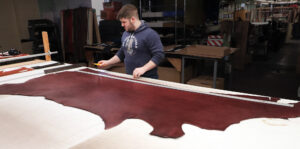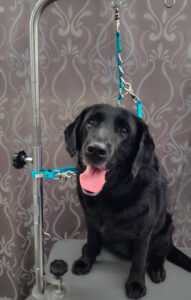
Practice Being a Good Leader to Your Dog
February 22, 2017
What does it mean to be a good leader to your dog? Does it mean that you physically dominate your dog or teach your dog to do what you say just because ‘you said so’? Remember that you’re trying to build a relationship with your dog based on trust and cooperation. You want to train your dog to do what you ask him to do using positive reinforcement techniques and by letting your dog figure out that correct behaviors work. You don’t want your dog to do what you ask out of fear. An important part of being a good leader is to be able to provide confident direction in a way your dog understands and helping your dog learn that good things will come by being patient and polite, not by being pushy and rude. Here are some ways that you can practice being a strong leader to your dog.
Implement a “no free lunch” policy
This simply means make your dog earn everything. In the same way that you’ve had to earn the good things in your life, we want to make your dog earn things also. Whether it’s a bowl of food, game of fetch, a scratch under the chin, or a walk around the block, you want your dog to earn it by sitting, looking at you, or expressing any other polite behavior.
Be a calm, quiet, confident leader
Good leaders remain calm and let others come to them. Put yourself in your puppy’s shoes. He’s born and immediately has to seek out his mother. He does this by using his sense of touch and smell. When the pup’s mother nurses she doesn’t go around the whelping box gathering the puppies into a pile and then lay down beside them. She just lays down and the pups find her. Weeks later when the pups are ready to be adopted, humans come to view them. They walk in and are loud and shouting, “Look, puppies! How cute!” and come forward and pick them up. The puppies immediately think, Oh my… these humans have no idea how to be a leader. I guess I’ll have to do it.
Feed meals
Controlling when your dog gets food is another way to establish leadership. Put the food down 2-3 times per day and give your dog an allotted period in which to consume it (20-30 minutes). If you let your dog graze, he’s the one controlling the intake of food.
Earning the rights of freedom
A common mistake that people make is that they allow their dog to have unearned freedom. The dog starts making inappropriate choices, such as having accidents, chewing furniture, getting up on the furniture, counter surfing, etc. Your dog should earn the rights to freedom. Confine them in a puppy-proof area or crate if no one can supervise them. When they are out of those “safe” areas they need to be watched at all times to prevent mistakes.
Waiting at doorways
Teach your dog to wait until you exit a doorway and then release or give them permission to follow you. If the dog is allowed to exit first, they may think that they control the walk.
Communicate Clearly
It’s important to understand how dogs communicate and learn. If you are not communicating to your dog in a way he understands, it’s going to take you much longer to train him… if at all. Just imagine you spoke Spanish and I tried to teach you to sit using English how long it would take to get you to understand. Dogs communicate with their body language. So, don’t be so verbal. Use your body language to communicate. One way to do this is by using hand signals. Once the dog understands what you’re asking him to do, then you can go ahead and attach your verbal command to the behavior. He will learn what this word means after several repetitions.
Follow Through
Don’t ask your dog to do something and then let him get away with ignoring you. If you ask for a behavior, then make it happen. Remember to set your dog up for success by working in an environment where he’s able to pay attention to you.


